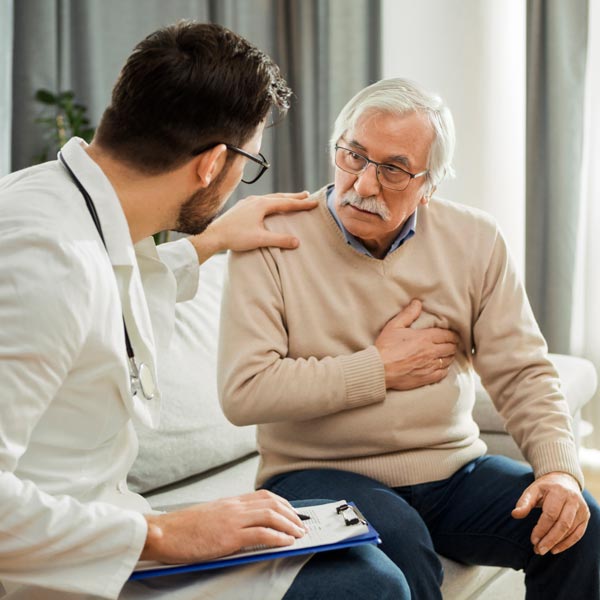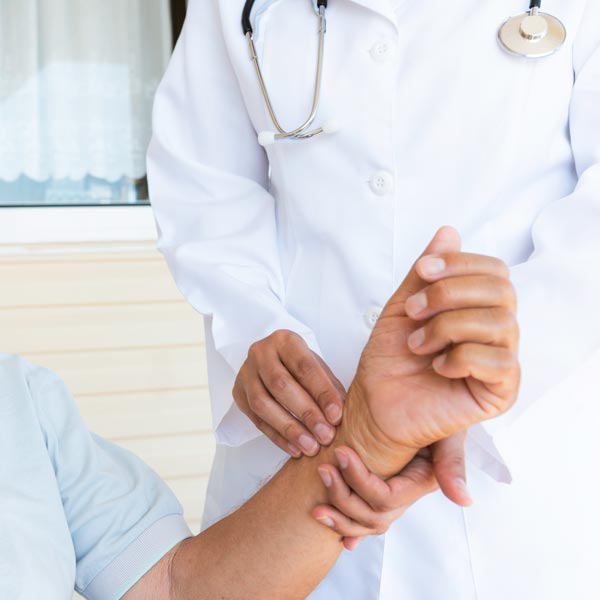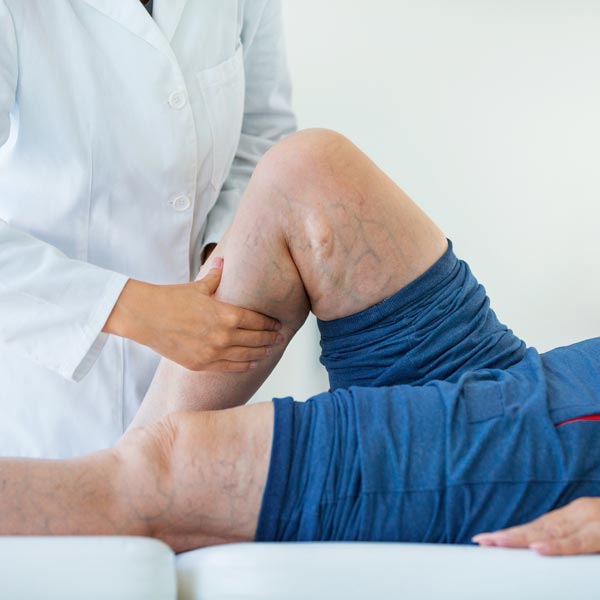Aneurysm Treatment
Identify the Signs of an Aneurysm Early
Much of the time, vein disorders are not immediately dangerous. Instead of coming on suddenly, they worsen over time without treatment. However, aneurysms, a condition affecting the arteries, require intervention as soon as possible. Symptoms can develop suddenly and quickly become life-threatening. Because aneurysms can be so severe, diagnosing and treating them immediately is essential. The team at California Vein & Vascular Centers offers outstanding diagnostic services and treatment for patients concerned about an aneurysm. We’re proud to have helped so many people in Los Altos, Los Gatos, Morgan Hill, and Salinas, CA. Learn the basics of identifying and treating an aneurysm.

What Is an Aneurysm?
An aneurysm is a condition that occurs when the wall of an artery weakens and swells due to the force of blood pushing through it. Over time, the bulge may rupture and cause dangerous amounts of internal bleeding. Ruptured aneurysms can occur nearly anywhere in the body, but they’re most common in the brain and aorta.
Types of Aneurysms
While we often think of an aneurysm as occurring in the brain, they can happen in any part of the body. Depending on their location, we classify aneurysms into several different types. Here’s a brief overview of the main types of aneurysms:
These aneurysms develop in the part of the aorta that traverses the chest. Most of the time, aortic thoracic aneurysms show few symptoms.
These "triple A" aneurysms are the most common type found in the aorta. They develop in the abdominal portion of the aorta and may cause stabbing pains or difficulty breathing.
Brain aneurysms are most prevalent in adults aged between 30 and 60. Some cerebral aneurysms and small and cause few problems, but others are severe and may be fatal.
Iliac aneurysms affect the iliac artery, found in the pelvic region.
These aneurysms occur outside the aorta, often in the femoral artery that runs through the upper leg.
This type of aneurysm occurs due to the weakening of arteries carrying blood to the gastrointestinal tract.
Splenic artery aneurysms develop in the spleen.

Don’t Ignore the Signs and Symptoms of Aneurysms
While some aneurysms are no cause for concern, others can be life-threatening. Because aneurysms can rupture with little to no warning, it’s crucial to diagnose them as early as possible. You can keep yourself safe by recognizing the common signs and symptoms of an aneurysm. Symptoms will be different depending on the location of the aneurysm, but generally speaking, you should stay vigilant for all of the following:
- Sudden, severe chest pain
- Vision problems
- Sudden headaches
- Sudden back pain
- Numbness
- Shortness of breath or difficulty breathing
- Rapid heart rate
- Dizziness and nausea
- Significant, unexplained drop in blood pressure
Is There Treatment for Aneurysms?
Like symptoms, treatment greatly depends on the location and severity of the aneurysm. Some conditions can be effectively treated with medications that target high blood pressure and high cholesterol. These medicines work to keep vessels from rupturing. However, more severe cases require immediate surgery. One of these procedures, the endovascular stent graft, is minimally invasive and repairs blood vessels damaged by an aneurysm. Talk to your doctor about which treatment your condition merits.
Serving in the following Locations
• Los Gatos: San Jose, Campbell, Saratoga, Santa Clara Valley, Silicon Valley, the South Bay, the Bay Area, and Santa Clara County.
• Los Altos: Mountain View, Palo Alto, Sunnyvale, San Jose, Silicon Valley, the Peninsula, and the Bay Area.
• Morgan Hill: Gilroy, South San Jose, Silicon Valley, Watsonville, Santa Clara County.
• Salinas: Monterey County, Hollister, Prunedale, Monterey, Pacific Grove, Watsonville, Seaside, Carmel-By-The-Sea, Carmel
Contact Us for a Consultation
Our vein and vascular specialists are dedicated to providing exceptional diagnostic tests and treatment for our California patients. Whether you’re worried about an aneurysm or want to address spider veins, our team is here for you. Contact us today to schedule a consultation
Benefits of Endovascular Treatment
There are a number of benefits in choosing endovascular treatment over traditional surgical procedures:
Incision in the groin is very small, vs. larger incision in the chest or abdomen
Reduction in hospital stay, post-surgical discomfort, and recovery time
Fewer complications and risks associated with this procedure



